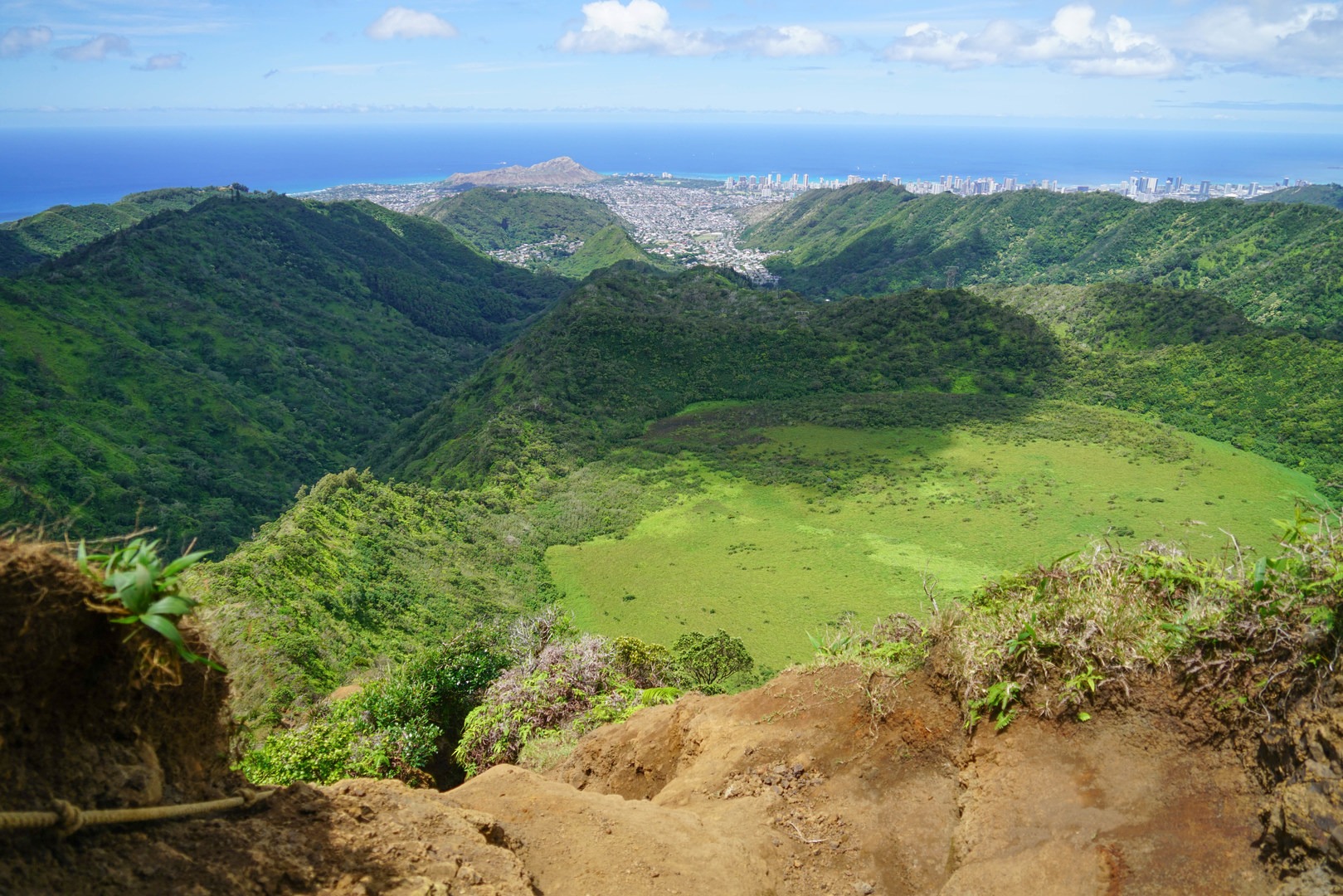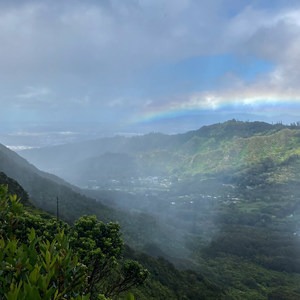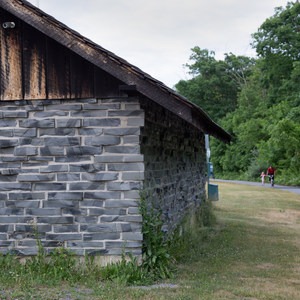You are here
If you are visiting Hawai'i, chances are that you have probably heard of Diamond Head and maybe even Koko Head, the two popular tuff cone craters that make up a significant portion of southern O'ahu's skyline. However, one of the lesser known craters, created in the same geological Honolulu volcanic series, lies tucked away in the back of Palolo Valley. It's named Ka'au Crater after a supernatural chicken, Ka'auhelemoa, that once lived in the valley. Legend has it that the demigod Maui insisted on joining all the islands of Hawai'i together. From Ka'ena Point he threw his mighty hook toward the island of Kaua'i, ensnaring the island only briefly, after which a mighty tug caused the hook to free itself and sail back over his head, landing in the valley and creating the indentation of Ka'au Crater.
Today a marsh sits in the caldera of the crater, with water feeding the streams and waterfalls of the valleys below. This 6-mile loop trail is considered strenuous, but not nearly as difficult as some other trails on the island, such as Konahuanui (K2) or Mount Ka'ala. The hike starts at the end of Waiomao Road, with a rather inconspicuous trailhead located behind a row of mailboxes. Do not enter private properties or driveways that flank the sides of the trail. Immediately, hikers must scramble down some boulders and are surrounded with lush tropical forest. The trail makes its way along the side of the riverbed and begins ascending gradually, following a water pipe up the valley contours. Roughly 2 miles in hikers will come upon the first waterfall with a small pool at its base. After heavy rains, this area can be extremely slippery and flowing heavily. The first waterfall makes a great turning point for inexperienced hikers, as the trail ahead gets much more difficult.
The trail ascends steeply up to the left of the falls with ropes for use as aids, and it crosses the top of the waterfall. Peering over the edge down to the pool below is quite the rush! A brief distance up is the second waterfall, a less spectacular version of the first, with the trail leading up the right side this time. Around the bend hikers catch a glimpse of the third and final waterfall, gushing from the crater rim above. The trail makes its way up this angled flume, crossing once with the aid of ropes. Careful footing should keep your socks dry. At the top of the third falls, views into the caldera offer a unique first sight of the Ka'au crater marsh. A junction marked with flagging tape leads off to the left, away from the summit and back down the ridge (avoiding the waterfalls). This is a good place for those not looking to complete the entire summit loop to begin the easiest descent.
Continuing up the crater rim, hikers cross some washed out and narrow sections of the ridge. Erosion and rock slides have made this portion of the trail difficult and dangerous, depending on the conditions. Ropes are in place for the steepest section, just below the summit. At the summit clearing, a sweeping panoramic view of the windward side of the island is awarded on clear days. To the east, Kailua, Lanikai and Olomana (three peaks). To the north, Konahuanui (K2) and Mount Olympus. To the west, Diamond Head, downtown Honolulu, Pearl Harbor and the airport.
After taking in the summit views, descend down the north, along the ridge line, past two sets of power line poles. After the second set, the trail begins to make its way down the far rim of the crater. Here, unique flora are abundant, such as 'ohia trees, orchids, and strawberry guava. At the lowest portion of the crater rim are another two sets of power lines. After the second set is a trail junction marked with flagging tape. The left trail leads back to the top of the third falls. The right trail is the proper descent, leading down the ridge, avoiding the waterfalls. This trail makes its way through a dense stand of strawberry guava before returning hikers back to the river bed. Follow the river bed and signs downstream, which lead back to the road and parking area.
Be sure to bring plenty of water for this demanding hike, especially for those planning on completing the entire loop. On clear days, the exposed ridge section can be brutally hot and sunny. On wet days or after the rain, the trail will be slick and muddy. Evaluate trail and river conditions before attempting to ascend past the first waterfall.









Comments
Sign In and share them.